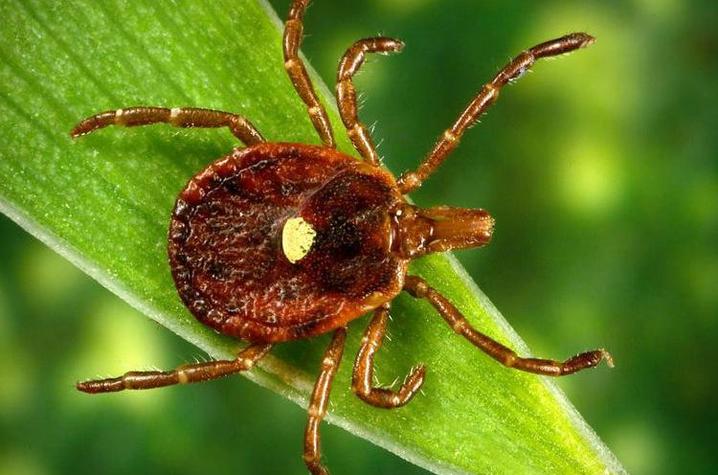UK Offers Information on Ticks and Alpha-gal Syndrome

COLUMBIA, Ky. (Oct. 25, 2018) — Alpha-gal syndrome, an allergic reaction also known as the “red-meat allergy” that some people develop after a tick bite, is a life-changing diagnosis. Mackie Jo Pennington of Adair County knows that to be too true.
“Since I was diagnosed in 2014, I have researched recipes and support options every day,” Pennington said. “I eat pretty much a vegan diet now.”
It is one reason why Pennington attended an alpha-gal educational meeting held recently at the Adair County office of the University of Kentucky Cooperative Extension Service.
“Once diagnosed, many individuals have contacted our office looking for additional information about alpha-gal and tick bite prevention,” said Nick Roy, Adair County agriculture and natural resources extension agent and meeting organizer. “Through our resources in the UK College of Agriculture, Food and Environment and relationships with local leaders, I felt we possessed the resources and expertise to address these topics through educational programming.”
In 2009, medical researchers identified the reaction to galactose-alpha-1,3-galactose, a sugar found in mammalian meats. These include beef, pork, lamb and venison. Reactions occur after ingesting meat and can include skin irritations, hives, digestive tract issues and breathing problems. Researchers traced the cause of the reaction to bites from the lone star tick.
“Alpha-gal is different than other food allergies in that it is caused by an allergic reaction to a sugar molecule, whereas most other food allergies are the result of an allergic reaction to a protein,” said Dr. Wes Sublett, an allergist who presented at the meeting. “Another difference is, with most food allergies, the reaction is immediate for the patient. With alpha-gal, the reaction is delayed, typically three to six hours after ingestion.”
The lone star tick is found throughout Kentucky and most of the Eastern United States. It is prevalent in South-central Kentucky and in the Green River area. It gets its name from the iconic white spot found on the female’s back. The tick needs three blood meals for survival during its lifetime. Individuals who spend a lot of time outdoors in tick-prone areas, such as tall grass and forests are at an increased risk for tick bites.
“Really the best way to keep from getting alpha-gal is to reduce your exposure to ticks,” said Lee Townsend, extension entomologist in the UK College of Agriculture, Food and Environment who also spoke at the meeting. “You will not know if you are susceptible until you have a reaction after being bitten.”
The meeting was a chance for Pennington to connect with and listen to others who have alpha-gal.
“While I would not wish this on anyone, it has helped me to know there are others with this syndrome, and I’m not alone,” she said. “It is interesting to hear about other people’s experiences, because we all have different reactions and triggers.”
Tick bite prevention information is available in UK’s publication "ENTFACT-618: Ticks and Disease in Kentucky." It is available online at https://entomology.ca.uky.edu/ef618 or through local offices of the UK Cooperative Extension Service.




